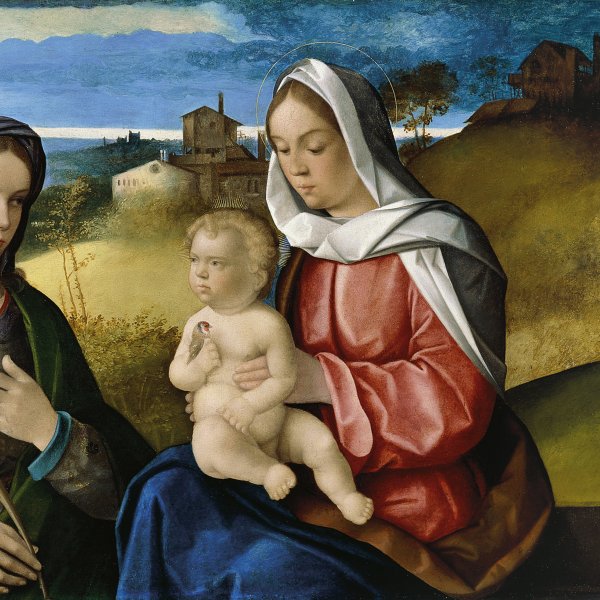Pietro degli Ingannati
Active ca. 1500-48
The 16th-century painter Pietro degli Ingannati was probably of Venetian origin but no documentation has emerged to date regarding his exact date of birth or death. It is thought that he may have trained in the Venetian workshop of Alvise Vivarini. Ingannati was familiar with the work of Giovanni Bellini and the influence of that artist is evident in his output, particularly with regard to his compositions. In particular he looked to Bellini’s Sacre Conversazioni with half-length or full-length figures located against landscapes. Ingannati’s style and figurative idiom reveal the influence of Benedetto Diana. He continued to use the same models and pictorial devices to the end of his career although the figures become more fully modelled and the colouring richer. His later works indicate the influence of Vincenzo Catena as well as a knowledge of the work of Giorgione and Palma Vecchio.
Ingannati’s first signed paintings are The Virgin and Child with four Saints (location unknown), and The Virgin and Child with two Saints (Museo Civico, Borgogna de Vercelli). Among oils attributed to the artist are Portrait of a Man (private collection, Italy), A Female Martyr (Portland Art Museum, Oregon), The Adoration of the Magi (Galleria Nazionale di Umbria, Perugia), and other works in the Staatliche Museen, Berlin. His last known painting is thought to be a Holy Family with Saint John the Baptist and Saint Catherine, signed and dated 1548 (formerly Sellar collection, London). On occasions Ingannati’s work has been confused with that of Francesco Bissolo.
Ingannati’s first signed paintings are The Virgin and Child with four Saints (location unknown), and The Virgin and Child with two Saints (Museo Civico, Borgogna de Vercelli). Among oils attributed to the artist are Portrait of a Man (private collection, Italy), A Female Martyr (Portland Art Museum, Oregon), The Adoration of the Magi (Galleria Nazionale di Umbria, Perugia), and other works in the Staatliche Museen, Berlin. His last known painting is thought to be a Holy Family with Saint John the Baptist and Saint Catherine, signed and dated 1548 (formerly Sellar collection, London). On occasions Ingannati’s work has been confused with that of Francesco Bissolo.





